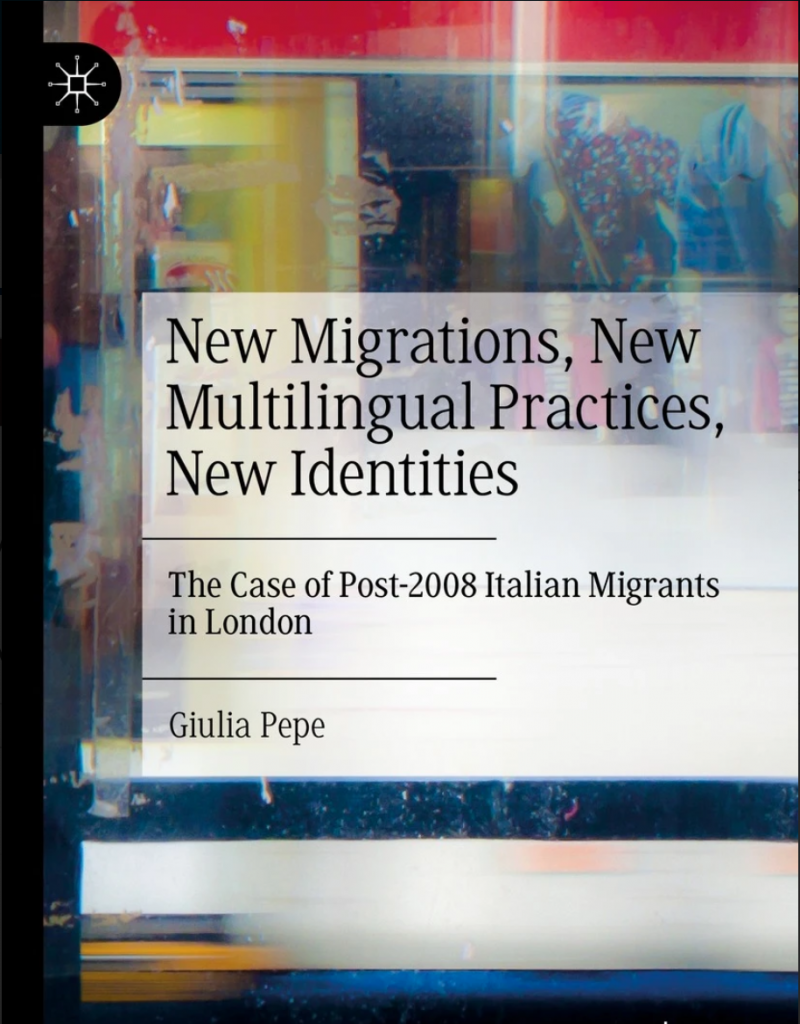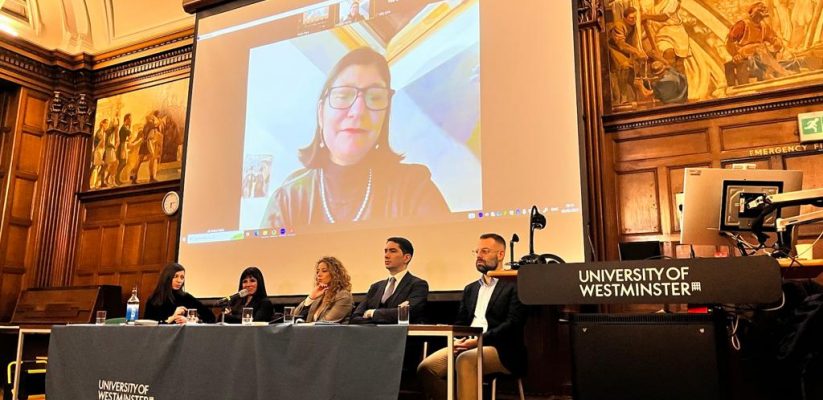Recently, University of Westminster saw the launch of Giulia Pepe’s new book ‘New Migrations, New Multilingual Practices, New Identities: The Case of Post-2008 Italian Migrants in London’. We spoke to her after the event to find out more about her motivations to write this book and reflect on the process of doing this.

Why did you write the book?
When I started my doctoral research in 2015, I was mainly interested in understanding the linguistic practices of a new group of Italian migrants, those who migrated to London after the 2008 economic crisis. It then became a broader investigation of the migration trajectories, community dynamics, attitudes, and ideologies of the group. When I finished my PhD, I realised it was important to publish the results of my research as I provide a portrait of the post-2008 Italian migration to London from a different angle through a holistic perspective.
Post-2008, Italian migration is an interesting phenomenon because it represented the restart of Italian emigration after many years of dormancy, as the last mass migration had happened in the decades after WWII. Thus, obviously, when scholars started to be interested in this new migration, they initiated a comparison between the two migration waves, with the idea of highlighting the differences of the two groups.
Methodologically, you chose linguistic ethnography. What did you find out with ethnography that was not captured before?
From my observation, it immediately emerged that some narratives provided by the academic literature and the media on this migration were weak or partially false. I explored the reasons for the development of such “false myths” and tried to show the importance of cross-checking statistics with historical facts, ethnography, while giving voice to the social actors of this migration.
My research also shows the superdiversity (Vertovec, 2007) that characterises the post-2008 migration. Identifying only one socio-cultural and linguistic profile of post-2008 migrants was almost impossible. In fact, I claim that such superdiversity represents the difference between post-Second World War and post-2008 migrants, while so far only differences in sociological variables between these two groups had been highlighted by the academic literature and the media. I noticed that the linguistic repertoires of the two generations of migrants might be similar in many cases, while the uses of such repertoires and the way of engaging with multilingual practices has mutated. I also found that multilingual practices, as translanguaging, have a key role in the negotiation of community dynamics and migrants’ daily activities and that the engagement with translanguaging is often seen by migrants as a way to negotiate, construct and perform their migratory identities.
What is translanguaging and why did you choose this theoretical framework for your research?
Translanguaging suggests a change in perspective. We do not look anymore at groups’ variables that influence the language contact phenomena realised but at individual practices that show migrants’ life in two or more languages. Translanguaging does not see multilingualism as two linguistic systems that come into contact, but it understands multilingualism as a whole, as two or more linguistic repertoires that merge together.
Individuals through translanguaging share their stories, background, political ideas, educational background, professional experience, migratory trajectories. Speakers can share these elements and build new knowledge by engaging with translanguaging. This is what I noticed while observing my participants, who are first generation migrants. In terms of competence, my participants were all natives Italian speakers and therefore we might claim that they would have not needed to use English during their in-group gatherings, where there were no inputs to switch to English. Nevertheless, engaging with translanguaging becomes one resource they have to show who they are, who they want to be and to share this process with other migrants.
Through the use of translanguaging, participants showed me how they affiliate or disaffiliate with the Italian community in London, and with Italian migration history, and how feeling of belonging and group’s dynamics can be contested through multilingual practices.
If interested in knowing more about this research and if you would like to find out more about post-2008 Italian migration in London, you can purchase the book following the link: https://link.springer.com/book/10.1007/978-3-031-09648-8
For questions, please email the author at giulia.c.pepe@gmail.com
- Obesity as a genotoxic environment - April 28, 2023
- Dalit History Month and its significance - April 20, 2023
- A professor is going to live in an underwater hotel for 100 days – here’s what it might do to his body - April 13, 2023
